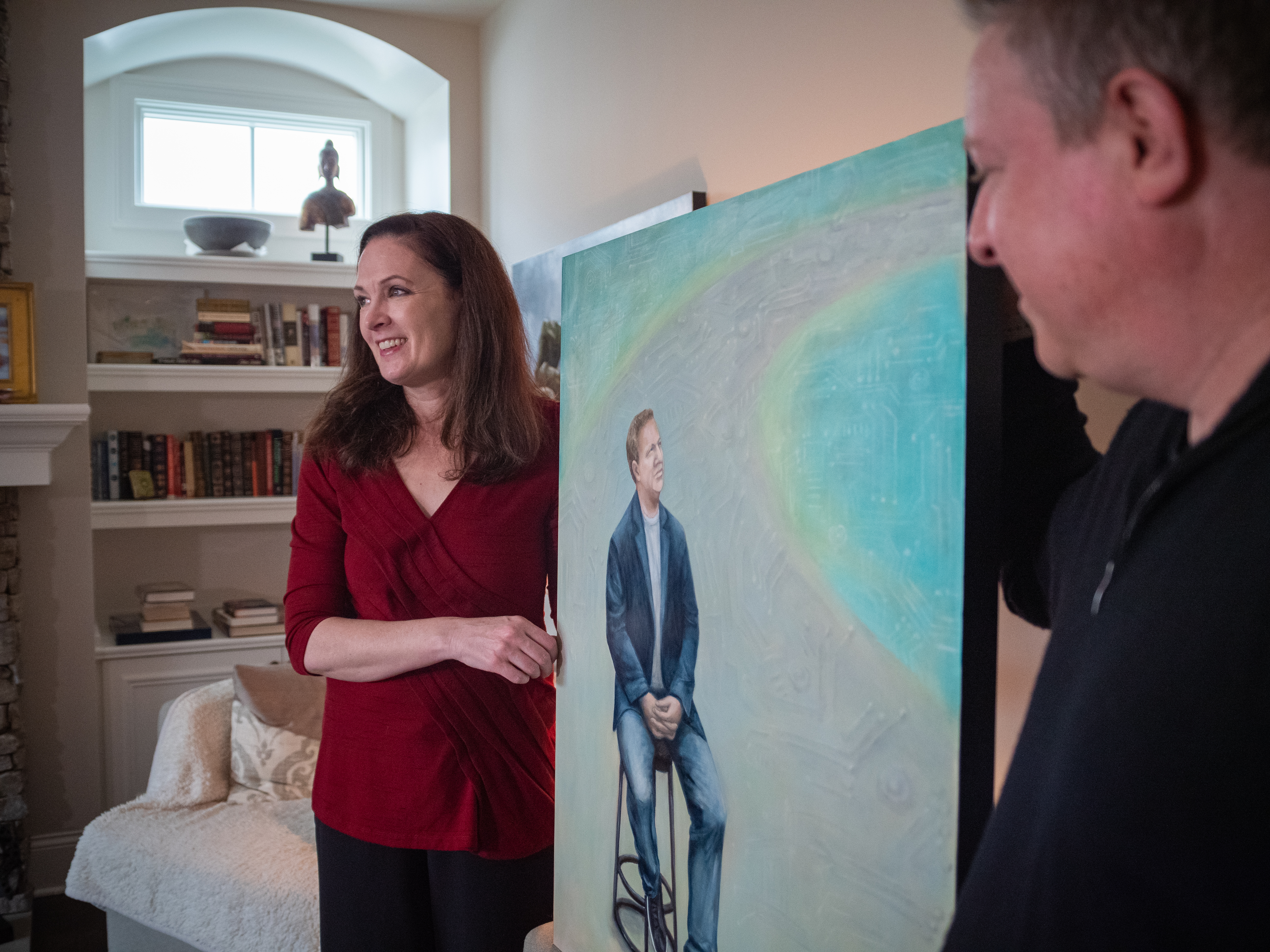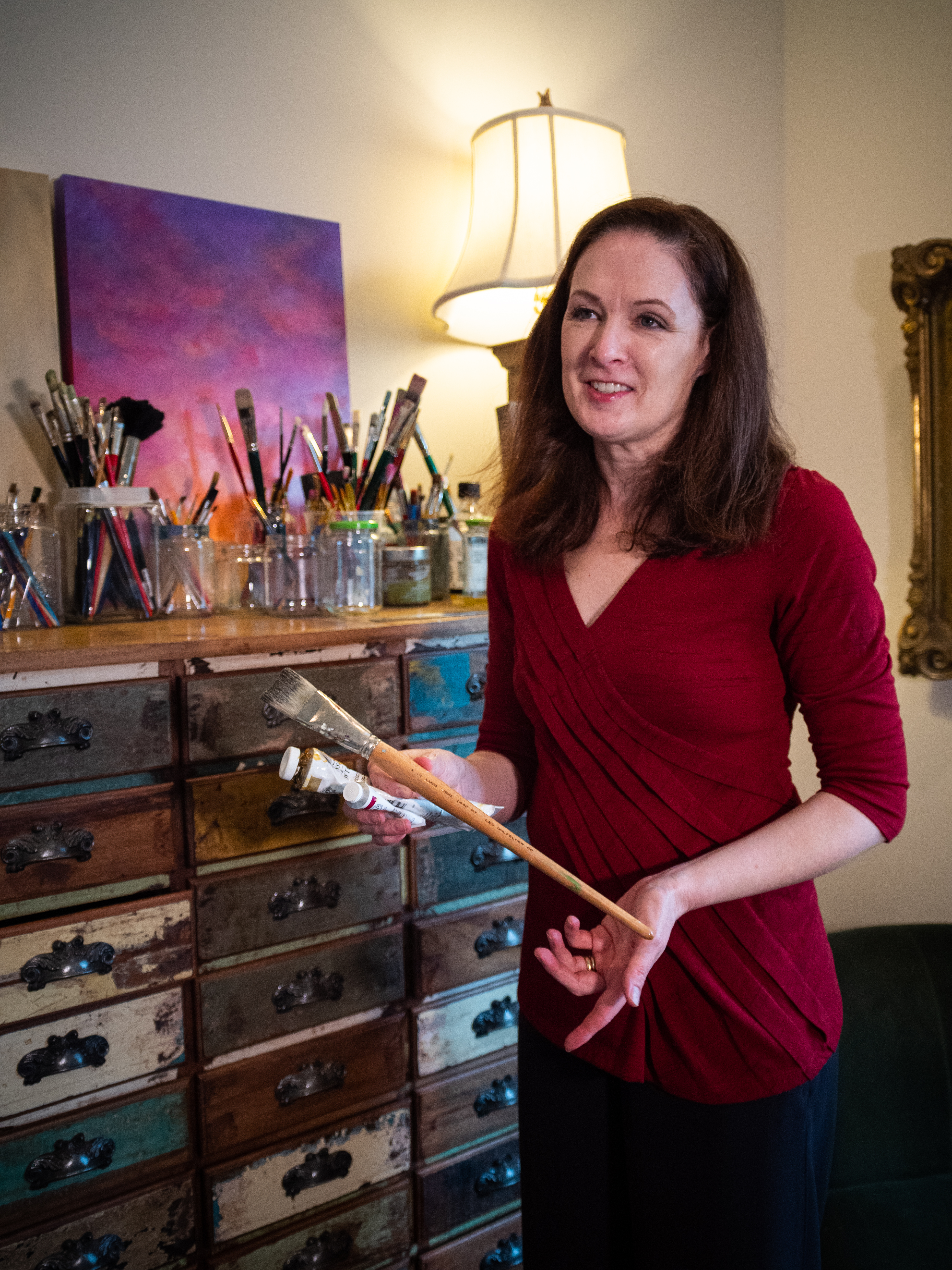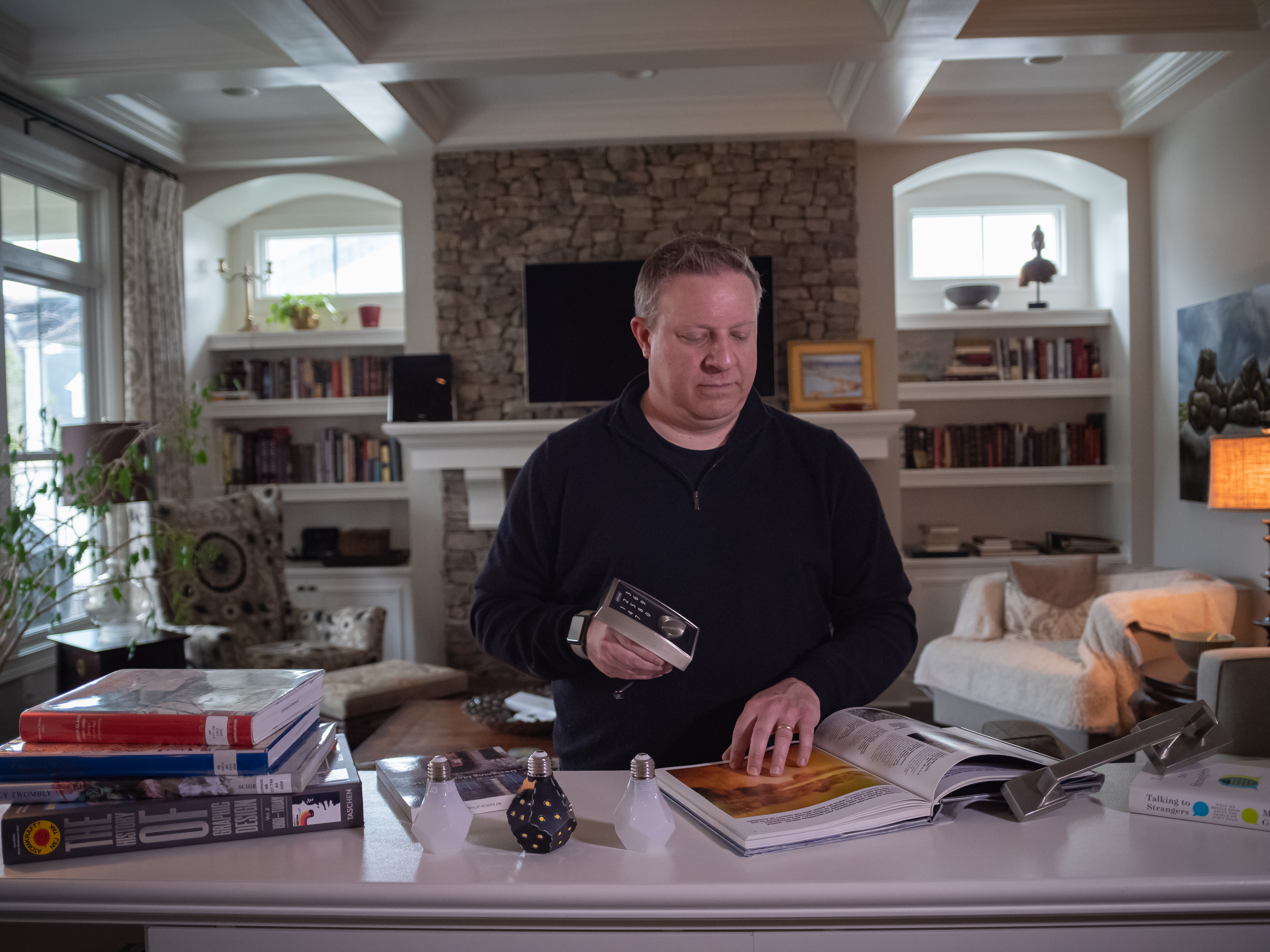
Rob and Carolyn Martens share a unique gift for innovation and visual art, but they express it very differently. Rob is chief innovation and design officer at Allegion and president of Allegion Ventures, while Carolyn is a professional visual artist and education advocate, whose work spans fine art, corporate and public art and managing out-of-home advertising for a major bank. They met at college, where they were both Division 1 varsity athletes; they have been married for 28 years and have three children, ranging in age from 15 to 18.
Doshia Stewart, co-founder of Allegion Ventures and vice president of global corporate communications for Allegion, sat down with Rob and Carolyn to discuss the intersection of art, technology and innovation.
DS: Rob, you’re known by many as an expert on corporate venture investments and information technology and a global futurist helping people understand how different technologies and the Internet of Things impact safety and security. Many don’t know that you are also an artist. How have art and technology come together for you?
Rob: It is a great question with a simple answer in my case: I don’t think art and technology ever separated for me. My undergraduate focus area was in sculpture and installation work. Another way to describe it would be the relationship of objects and people in a shared space. That course of study was a great primer for the exploration on how the physical and digital world could come together in a more functional, secure and beautiful way. I see it in the thought we put behind the user experience: Consider the way software, industrial design, user interface design, touchless operators and behavioral data come together for a single seamless experience of entering a smart building; it feels like an orchestrated dance, tactile experience and visual art all rolled into one – and it’s a pairing of art and science that happens millions of times every day!





